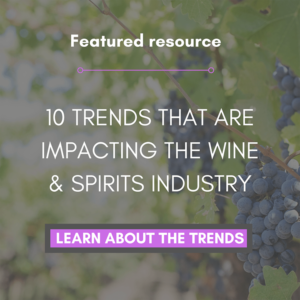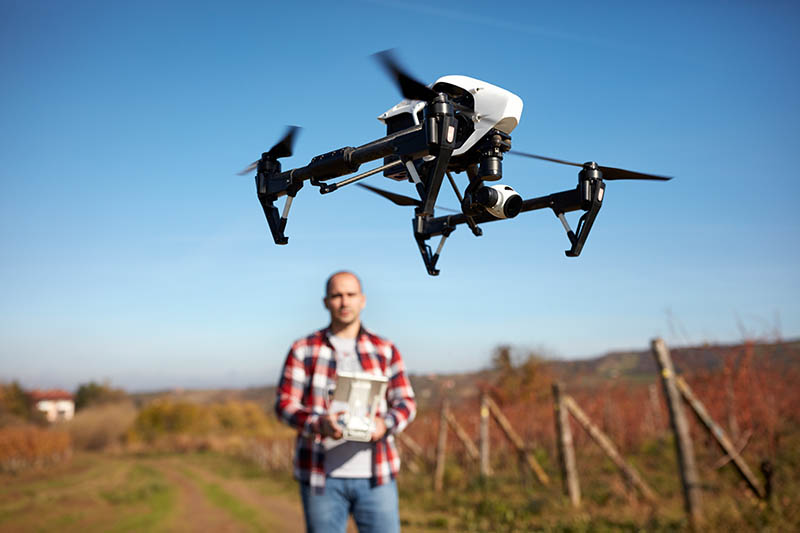The buzzing you hear in a vineyard is not coming from bees or any other insect, it’s the sound of a drone in the sky.
In a world where climate change ravages crops and prices generally keep rising, winemakers are saving money, fighting climate change, and saving time all through the use of drones.
Drones are driving down the cost of pesticides, fertilizer, and labor. They even help save water. Drones analyze the needs and health of crops when climate change is making them more unpredictable. Overall, drones help winemakers save time, and the wine is better because them.
Drone for hire
Drones can take on several jobs within a vineyard. The flying robots can hover above the vines and provide more detailed pictures than satellites can, because the drones can get much closer to the ground. Vineyard workers can then analyze the pictures to find any threats to the grapes.
For example, drones can detect reflectance rates off of plants. Plants with high reflectance are retaining a lot of water, which is good for the crops. Diseased plants won’t retain much water, and will have a low reflectance rate, which can quickly signal a problem to the vineyard staff.
With the data drones provide, winemakers can decide what areas need fertilizing or pesticides. The drones can then disperse either one much more quickly than human labor. While drones are slower and more expensive than wing-craft planes in dispersing something like fertilizer, they are far more accurate.
Drones provide reliability for vineyards, as well. For vineyards in California that are near fires, if they planned to use planes for images or dropping fertilizer, the smoke would force pilots to ground the flight. The drones are unaffected by the smoke or clouded visibility, and can still fly.
In addition to reliability, drones also provide winemakers with freedom and remote working capabilities. The drone’s software lets winemakers control what happens with the vineyards through an app or on a computer, meaning the workers do not even need to be present on vineyard property to care for the grapes.
Big payout, but a big investment
“This isn’t your everyday toy drone. These are big, stable, sophisticated flying robots for business,” Michael de Lagarde, chief executive officer of Delair, told Bloomberg. Delair is a startup based near Toulouse that makes not just the aircraft but data-analysis software for them. “Our clients don’t care for drone fun,” he says. “They measure cost, return on investment, and performance.”
While the drones do save money and help make better wine, they’re a hefty investment for winemakers. Delair’s basic model drone, which is 3.6-feet wide and weighs nearly seven pounds, costs $16,800. A model with a more intricate radar system can cost nearly $225,000.
Yes, drones are expensive, but they’re saving vineyards money.
Scientists at Washington State University predict that drones can help growers in Washington recoup $80 million in damages from birds. The drones deter the birds from flying into the vineyards.
“Bird damage to crops has always been a problem,” Manoj Karkee, an associate professor at WSU’s Agricultural Automation and Robotics Lab, told Fruit Grower’s News. “Drones are becoming more practical as the technology for them develops.”
Wineries in Argentina are already experiencing the benefit of drones fighting off birds. The Bodega Catena Zapata Farm in Argentina reported that the drones eliminated all crop loss from birds, according to Wine Magazine.
How your vineyard can use drones
Drones are definitely a hefty investment, but using technology is the future of creating better wines. Investing in a drone could save your vineyard from losing valuable grapes and vines when disease or problems are detected early.
For winemakers who use drones a plethora of data is available, helping them to make decisions about the wine that will affect its taste and quality. Drones allow that data to be delivered in sharper focus – and from a perspective that wasn’t available before.
- 87% of Utilities Have Experienced at Least One Data Breach in Last Three Years - February 5, 2024
- Can Drones Lower Your Next Utility Bill? - January 10, 2024
- Onshore Wind Farms Are The Next Big Thing In Renewable Energy - December 6, 2023




